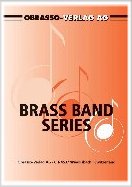We've found 1000 matches for your search. Order by
Results
-
 £58.60
£58.60BIG MANCINI, THE (Brass Band) - Mancini, Henry - Barry, Darrol
Includes: Peter Gunn Theme; Baby Elephant Walk; It Had Better Be Tonight; The Pink Panther; Peter Gunn Theme - Reprise. Grade: Medium
Estimated dispatch 7-14 working days
-
 £38.80
£38.80BRITISH LEGION, The (Brass Band Marchcard) - Bidgood, Thomas - Smith, Sandy
Official March of the Royal British Legion. Grade: easy
Estimated dispatch 7-14 working days
-
 £69.95
£69.95CONCERTINO CLASSICO (Trumpet or Cornet Duet/Brass Band - Score and Parts) - Horovitz, Joseph
Recorded on Polyphonic DPRL901D Joseph Horovitz (The Brass Band Music of)
Estimated dispatch 7-14 working days
-
 £32.95
£32.95CONCERTINO CLASSICO (Trumpet or Cornet Duet/Brass Band - Score only) - Horovitz, Joseph
Recorded on Polyphonic DPRL901D Joseph Horovitz (The Brass Band Music of)
Estimated dispatch 7-14 working days
-
 £82.95
£82.95EUPHONIUM CONCERTO (Horovitz) (Brass Band - Score and Parts) - Horovitz, Joseph
Recorded on Polyphonic DPRL901D Joseph Horovitz (The Brass Band Music of)
Estimated dispatch 7-14 working days
-
 £37.95
£37.95EUPHONIUM CONCERTO (Horovitz) (Brass Band - Score only) - Horovitz, Joseph
Recorded on Polyphonic DPRL901D Joseph Horovitz (The Brass Band Music of)
Estimated dispatch 7-14 working days
-
 £54.20
£54.20EVE OF WAR, The (Brass Band) - Wayne, Jeff - Jenkins, Christian
From War of the World. Grade: medium
Estimated dispatch 7-14 working days
-
 £37.95
£37.95GOLDEN LADY, THE (Brass Band) - Richards, Goff
Recorded on QPRL055D The Music of Goff Richards
Estimated dispatch 7-14 working days
-
 £50.90
£50.90IMPOSSIBLE DREAM, THE (Brass Band) - Leigh, Mitch - Smith, Sandy
from 'The Man from La Mancha'. Grade: easy-medium
Estimated dispatch 7-14 working days
-
 £37.95
£37.95JAGUAR, The (Brass Band) - Richards, Goff
Recorded on Polyphonic QPRL055D The Music of Goff Richards
Estimated dispatch 7-14 working days
